ANN Guest Editorial By Jerry Gregoire, Redbird Flight
Simulations
 ANN E-I-C
Note: We LOVE guest editorials... especially
when we can learn so much from them. We particularly favor them
when they are gutsy, well-thought-out, controversial and brutally
honest. This one is all that... and more... and comes from a guy
whom we have observed to be one of those innovative personalities
that has no fear of coloring outside the lines and dares to do what
others insist can not or should not be done. I hope you enjoy this
piece as much as I did... and we greatly look forward to working
with Jerry
this March at the Aviation Transformation Conference
2012... as he was one of our earliest invitees. Issues
like those he brings up, and so many others, will be THE center of
attention at the forthcoming 2012 Aviation Transformation
Conference... an event designed to seek true Transformative Change
for the aviation world. -- Jim Campbell, ANN Editor-In-Chief (and
pleased to find out that I'm NOT the only troublemaker in GA --
GRIN).
ANN E-I-C
Note: We LOVE guest editorials... especially
when we can learn so much from them. We particularly favor them
when they are gutsy, well-thought-out, controversial and brutally
honest. This one is all that... and more... and comes from a guy
whom we have observed to be one of those innovative personalities
that has no fear of coloring outside the lines and dares to do what
others insist can not or should not be done. I hope you enjoy this
piece as much as I did... and we greatly look forward to working
with Jerry
this March at the Aviation Transformation Conference
2012... as he was one of our earliest invitees. Issues
like those he brings up, and so many others, will be THE center of
attention at the forthcoming 2012 Aviation Transformation
Conference... an event designed to seek true Transformative Change
for the aviation world. -- Jim Campbell, ANN Editor-In-Chief (and
pleased to find out that I'm NOT the only troublemaker in GA --
GRIN).
 A couple of weeks ago I was flying
a brand new Citation CJ, single pilot with no passengers, thank
goodness, from Manassas to Jackson, Mississippi. My actual
destination was Austin, Texas but because the FAA doesn't allow
brand new airplanes to fly in RVSM airspace until an FAA inspector
has spent a few weeks staring at the Cessna issued RVSM book that
comes with every brand new airplane, I was burning an extra 100
gallons of Jet A per hour. I ought to tell Al Gore on these guys.
While in the cloud tops and chop at FL270, enjoying the "new
airplane" smell, I got a Master Warning with the associated red
lights and a screaming "RIGHT ENGINE OIL PRESSURE" aural warning
loud enough for Helen Keller to hear. This was a first for me
… in the real CJ, anyway.
A couple of weeks ago I was flying
a brand new Citation CJ, single pilot with no passengers, thank
goodness, from Manassas to Jackson, Mississippi. My actual
destination was Austin, Texas but because the FAA doesn't allow
brand new airplanes to fly in RVSM airspace until an FAA inspector
has spent a few weeks staring at the Cessna issued RVSM book that
comes with every brand new airplane, I was burning an extra 100
gallons of Jet A per hour. I ought to tell Al Gore on these guys.
While in the cloud tops and chop at FL270, enjoying the "new
airplane" smell, I got a Master Warning with the associated red
lights and a screaming "RIGHT ENGINE OIL PRESSURE" aural warning
loud enough for Helen Keller to hear. This was a first for me
… in the real CJ, anyway.
Master Warnings in this airplane come in five flavors, those
being engine fire, cabin pressure, battery over-temp, a dual
generator failure, and oil pressure (or lack thereof) and they are
as rare as two dollar avgas. When they do happen, though, you need
to do something pretty quick.
So, here's the scene: red lights on the panel, a concentration
killing aural warning that I can't shut off, for some reason, and a
list of memory items in my head that may or may not be the right
list of memory items for this problem. With so many opportunities
to do the wrong thing, many of which could cause an even bigger
problem, I was fortunate to have practiced this a hundred times
before in a simulator.
Remember Zeno's Paradox? In case you don't, it's a mathematical
absurdity that goes: If you travel from point A to point B, you
necessarily must travel half way to point B before traveling all of
the distance. Now from that point, you must again travel half of
the remaining distance. If you continue to do so (always traveling
half the distance), how could you ever hope to reach point B?
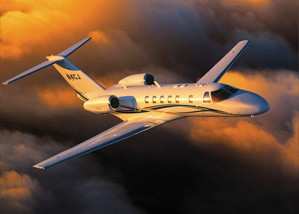
The fact that we do, on occasion, reach point B is, in a very
roundabout way, proof that some mysteries are not mysteries at all.
They are simply a failure to correctly frame the question, a
question based on a faulty and provably untrue supposition.
Along those same lines, a lot of very troubling data has come
out lately on the state of flight training indicating fewer and
fewer new student enrollments, a stunning 78% drop out rate before
the check ride, and, in spite of more regulations, more chapters in
the training manuals, and more technology in the cockpit, accident
rates that stubbornly refuse to go down. Now, armed with this
information, try this little experiment. Call every flight school
owner or general manager you know and ask them what it is they
think they need to change about THEIR particular training program
to address this issue. I can guarantee that every single one of
them will say,
"Well, .... (shrug) .. nothing. If there was anything that we
needed to change we would have changed it by now".
Nothing? You mean …. nothing? How can the answer be,
"Nothing"?
It's because the question is based on the false notion that
flight training and, in particular, flight schools are to blame for
this problem. For the most part, they are not to blame. So, who is,
you ask? Well, if your company or organization builds airplanes, or
writes regulations, or services airplanes, or writes curriculums,
or sells insurance, or sells pilot supplies, or manages airports,
or sells fuel, or runs airport security, or advocates for pilots,
or builds flight simulators then YOU are probably to blame for this
problem and, just as probably, YOU are not doing enough about it.
That's a real shame because your company will be one that
ultimately suffers.

Author's Note: If you were insulted to
the point of violence by the preceding remark, it might be best to
quit reading now. I've always believed that before you criticize
someone, you should first walk a mile in their shoes. That way,
when you do criticize them, you'll be a mile away, and you'll
have their shoes.
This dedicated in-activism in support of the single most
important driver of general aviation's future is a certified
mystery. Strange, short-sided, suicidal behavior on an
industry-wide scale. Fixable? Yes, but not until we stop pointing
the finger at the flight school operators and start coming to grips
with our individual and collective lack of investment in this
regard.
A friend sent me an article he'd clipped from the Christian
Science Monitor a while back that said something about how
wonderful Stanley Kubrick's movie 2001: A Space Odyssey was and how
it still resonates some 40+ years later. Nonsense. A tiny article
on the back of the clipping, however, did catch my eye. It told of
a 25 watt light bulb that had been burning continuously for the
past 70 years in the restroom of an Ipswich, England electric shop.
The story isn't so remarkable because of this single, perversely
persistent, light bulb but because this particular bit of
technology made, 70 years ago, is still compatible with 21st
century systems. It's a reminder that things in their
quintessential form-be they technology, processes or even ideas-if
left unmolested, can and do last a very long time. And furthermore,
despite the hype, real, honest-to-God, life-altering, bell-ringing
change has actually been decelerating when viewed over a period of,
say 100 to 120 years. The fact is, the gadgets that fill our homes
and mount in our cockpits are merely the sheen of technology, and
our boasts of rapid and miraculous change are actually little more
than the narcissism of small differences.

Airplanes fly the way they used to 70 years ago. They still have
propellers for thrust, wings for lift, and an unusable whiskey
compasses flopping around during turns for navigation. Everything
truly new in the last 70 years has been done in the pursuit of
safety. Safety is good, but most of what has been done, as the
statistics show, is sugar sprinkles on a birthday cake. There's
technology that keeps a pilot better informed and more distracted
at exactly the same time, volumes of new and conflicting
regulations, and well meaning yet worthless additions to the
required curriculums.
By the way, does anyone out there think that CRM training for
single pilot operations or memorizing the five hazardous attitudes
of pilots is making a dent? It's like they say, you have to have at
least three of the hazardous attitudes just to climb into a
cockpit.
Our fixation on layering complexity in the name of flight safety
is a conditioned response to deal with the ever larger and more
complicated challenge of flying completely risk free. It is, as
Descartes would say, to doubt what isn't self-evident and reduce
every problem to its simplest component. In the face of greater
complexity, we are forced to concentrate more and more about less
and less and pursue solutions that are split into sub-disciplines
and sub-sub-disciplines and pared down to pinpoints. Complexity
breeds complexity.
That the process of flight training has completely jumped the
rails is certain. Pinpointing exactly when this happened is not. A
close, but misguided, friend of mine who is usually right in all
things aviation, believes that flight schools started falling
behind and falling apart when technology took over in the cockpit
and in aviation in general. In his estimation, the rest of the
aviation industry has been moving away from the flight training
industry for, at least, the last 15 years.
Silly pilot.

Everyone, with the possible exception of the luddites at the
FAA, would agree that the aviation industry is not known as an
early, or even a timely adopter of technology. I still cringe when
I think about the excitement "touch screens" generated at this most
recent Sun 'N Fun. It was as if aviation had just discovered the
dipstick. Jeeez. Touch screens have been around since 1971! There
are touch screens on the gas pumps at the Git-'N-Go. The fact is,
aviation is the last adopter of technology and, for the most part,
adopt new technology only under some kind of duress. And when it
does finally deliver this or that technology, it's certainly not a
surprise to anyone. No one, including the flight training industry,
is caught off guard.
To our collective shame, our industry did not move away from
flight training, it turned away.
So much blame to slather around and so little time.
Let's spare the minor players and concentrate on the Four
Horsemen of this particular Apocalypse,
- The Airplane Manufacturers,
- The Avionics Manufacturers,
- the FAA,
- And The Simulator Manufacturers.
On that list of things one doesn't talk about in polite company
like sex, politics, and, of course, Fight Club, a criticism of the
aviation industry coming from within will not be welcome.
Politeness was what killed the dinosaurs.
When the master warning went off in the cockpit, the second
biggest surprise, after the fact that it went off at all, was how
incredibly loud the aural warning was. I've since come to learn
that the volume is not determined by the manufacturer, but by the
FAA during certification. While it's certainly important that the
pilot and co-pilot hear the warning and, perhaps, it's important
for the passengers to here it, although I can't imagine why, must
it be loud enough for the guys in the next airplane? In any case,
once the aural alarm sounds, you're supposed to be able to turn it
off by pressing the Master Warning button on the panel.
Unfortunately, that wasn't working, no matter how many times I
pressed it. Concentrating on the emergency was a first class
challenge and it became an even bigger problem later when I
attempted to contact ATC.

Abandoning any hope of recalling the memory items, I reached for
the emergency checklist and began thumbing for the correct tab.
Even reading comprehension was an issue with this screaming going
on. Imagine trying to read a physics textbook in a room that's on
fire while a rabid monkey shoves an ice pick in your ear and you've
got a pretty good idea where my concentration was. Slowing my brain
down enough to focus was the first order of business. Rehearsing so
many drills like this in the simulator taught me a very important
thing about emergencies in a CJ, that is, that as long as the
airplane is still flying and nothing appears to be on fire, you've
got time. And while the first thing that pops into your head might
be the right thing, it's far better to wait to see if that's the
second thing that pops into your head.
I finally found my place in the checklist and, by this time,
began to suspect that the problem was a false indication.
There are few manufactured products that I can think of that
have not improved in their value proposition, over time. By that I
mean, there are few machines that, over time, have not gotten
significantly less expensive, like computers, or delivered more
features and capability for the same money (adjusted for
inflation), like cars. Adjusted for inflation, the cost of the
average car is about the same today as it was in 1960.
In 1960 a new Cessna 172 cost $9,000.00, which would be
$66,000.00 in today's dollars. In 2011, a new Cessna 172 actually
costs a heart stopping $300,000.00. Cessna has had fifty years to
figure out how to apply the fundamentals of automation to the
manufacture of this airplane, and they're still building them like
they're not quite sure how they go together. As value propositions
go, it doesn't get much worse than this. So, why does Cessna chose
to continue to operate this way? Because, while they may have
competition, no one is doing it any better. Among the short list of
battle tested, widely available, easily supportable, VFR/IFR flight
training platforms, the Piper Warrior, a Diamond DA40, and the
Cirrus SR22 sell for between $300 and $420 thousand dollars.
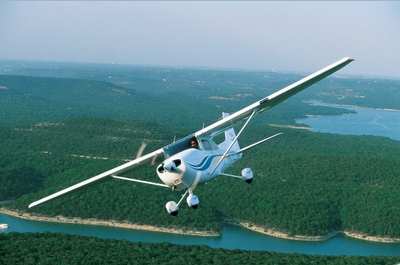
About this time, you're probable saying to yourself, "What about
the LSA's like the Skycatcher or the Remos?". To which, I would
answer, "Read this paragraph more carefully".
Add in all of the wonderful features that Cessna has added to
the 172 like a bigger, better engine, better avionics, leather
seats with those nice little folds, better ventilation, and high
performance cup holders and you still can't justify or even explain
that cost. Cessna will, no doubt, tell you that the real cost
increases are due to the complexities of certification, and that
might be true, except that we're talking about an airplane that was
certified in 1958. If they spent all of that money certifying
changes in cosmetics, they shouldn't have.
No matter how you cut it, an aircraft with a $300,000.00 price
tag, regardless of the quality of its cup holders, is not well
suited for the mission of most flight schools. If Cessna offered a
brand new 1960 172 with exactly the same features and capabilities
of their 1960 model, would you buy one for $66,000.00? How about at
twice that price? I would and so would every flight school in the
world.
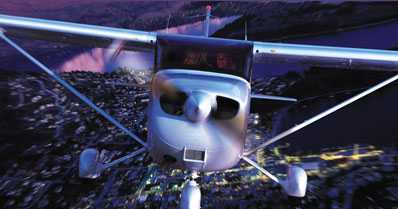
Modern aircraft avionics, aka glass cockpits, are magic. In the
hands of a well trained pilot, they make flying safer and easier
and give our aircraft a whole new level of utility. Because of
their spectacular breadth of functionality, the operation is not
always intuitive and students have to be carefully trained to avoid
the distraction of trying to figure out how to load a STAR while
flying the airplane. The very best and safest place to train a
pilot in the use of these devices is in a flight simulator,
operating in the context of an actual (simulated) flight, instead
of simply using a computer-based tutorial or, worse, just reading
the manual. Up until the arrival of Redbird, flight simulators that
had glass cockpits were extremely expensive because the avionics
manufacturers charge the simulator manufacturers same price for
their equipment as they charge the aircraft manufactures, which is
….. a lot. This was, before Redbird, a huge barrier for most
flight schools wishing to provide 'glass cockpit' training.
Redbird's approach to reducing those costs was to replicate the
functionality of, for instance, the Garmin G1000 using home-grown
software and standard displays with correctly positioned keys and
buttons. This brought the cost of a glass cockpit simulator down
from $95 thousand to just $8 thousand. It also irritated the hell
out of the avionics manufacturers. Well, …. that's tough, as
far as we're concerned. Perhaps they should have been giving the
simulator companies a meaningful price break in the name of flight
safety.

At a conference recently, I overheard an executive from one of
these avionics companies telling someone else that their new line
of touch screen devices would be impossible for Redbird to
replicate. That's so stupid, it makes my hair hurt. Was he
bragging? Was this guy irresponsible enough to believe that driving
the cost of flight training back up was a good thing? Was he
delusional enough to think Redbird couldn't adapt "touch screen"
technology to their simulators? Hell, we've already done it!
The FAA's mission statement, taken directly from the website
reads:
"Our continuing mission is to provide the safest, most efficient
aerospace system in the world."
Good mission. I particularly like the fact that it says "safest"
and not "safe". It's a recognition that "safe" is unattainable
until the day comes when we are no longer allowed to fly our
airplanes.
The FAA is a regulatory agency. A regulatory agency writes
regulations for a living. For every regulation, good or bad,
necessary or unnecessary, the target if those regulations,
companies and individual pilots, pay a price in cash and
productivity. Those additional costs are not the FAA's problem. The
FAA balances safety and security against cost, productivity, and
freedom on a rusty, frozen scale.

According to a Gallup poll from a couple of years ago, 18% of
Americans are under the impression that the Sun orbits around the
Earth. That's approximately 50 million Americans. Given the sheer
size of this number, might we expect that some of these folks are
currently writing regulations for the rest of us?
Up until recently flight simulators for universities and
small-to-medium sized flight schools fell into one of two extreme
categories, one being simulators that were far too expensive for a
normal flight school to afford and the other being simulators,
those certified as Advanced Aircraft Training Devices (AATD), that
were far too useless for ab initio training. Simulator design,
driven entirely by the certification demands of the FAA and their
amazing grasp of 1950s technology, gave AATD certification credit
exclusively to designs addressing instrument training while
ignoring the needs of entry level students. The implication is that
training for new students, you know, the ones with no skills, was
best handled in the airplane. After all, what could possibly go
wrong?
Even today, when we certify a simulator as an AATD there is no
additional credit given for features critical to training beginner
students such as wrap around visuals to teach VFR maneuvers,
accurate representations of the terrain between the airports to
teach pilotage and cross country skills, or even motion to train
airplane handling skills. As far as the FAA is concerned, a full
motion simulator with wrap around (sideways looking) visuals,
accurately placed avionics controls, and a world-wide data base of
airports and terrain is no more valuable than a simple desktop sim
with a single 12 inch monitor.
In 2006 a partner of mine and I had just finished a check ride
in a Level D King Air sim, a machine that costs somewhere North of
seven million dollars. We had had some difficulty flying a circle
to land approach because the visuals were so bad. They were hazy,
uneven in intensity and color and lacked detail. As we climbed out
of that overpriced cement mixer, we had one of those moments when
we realized that given the state of technology, we could easily
design a visual system that was far better than this one at a tiny
fraction of the cost. Pretty strange. We wondered, if we knew how
to do it, why weren't the big guys, or even the small guys,
building simulators that had decent, affordable visuals. The
answer, sadly, has to do with the momentum that keeps companies and
industries stuck in old paradigms combined with a fundamental
misunderstanding of the marketplace and its needs.
A few computer-geek companies from outside the industry, Redbird
included, could see the potential of applying off-the-shelf and
emerging technologies to the problem of providing affordable,
functional simulator solutions. Redbird made the critical decision
to break with the FAA's point of view on what makes a adequate
training device and started building simulators that are designed
to go beyond minimum certification requirements. Their goal was a
widely affordable IFR/VFR trainer to make safe, proficient pilots
in a predicable, safe environment. The introduction of the Redbird
FMX exposed a huge underserved market with enormous untapped
potential and the resulting sales have been simply amazing. Imagine
Redbird's surprise when the demand for a fully capable VFR trainer
seemed to magically appear. To give you some idea of the size of
the demand, 170 full motion Redbird simulators have been delivered
in the last 24 months.
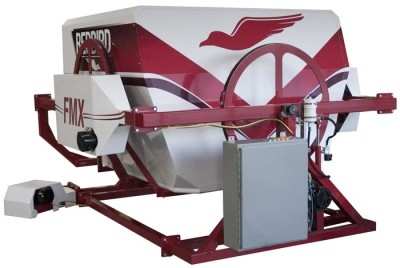
Does that sound like bragging? Maybe, but 170 full motion flight
simulators is more than anyone has ever sold over any period of
time. It is also less than 5% of the available market. Lots more
work to do.
As successful as Redbird has been in creating and exploiting
this new market, I consider Redbird's efforts, to date, to be
wholly inadequate. Like the rest of the industry, Redbird has not
done a good enough job developing the curriculums or process
guidance many schools need to get maximum benefit from the
simulators they buy. Further, simulator companies need to do more
to make their devices more accessible to students as skills
trainers, and finally, they need to find better ways to efficiently
develop the most relevant designs possible. The fact is, from a
design standpoint, we are often shooting in the dark. Under the
current circumstances, we are all forced to design a system and
measure its effectiveness not based on some objective measurement
of student performance, but by whether it sells well or not. This
is a very inefficient way to design things.
Consider the question: Does motion help in ab initio training?
We think it does. There seems to be a lot of anecdotal evidence
supporting that notion but, we can't prove it. Our competition, the
ones that do not have a line of motion simulators, likes to say it
doesn't help. I might say that too, if I had to compete with
Redbird.
About a year ago Redbird decided they needed to understand the
effect of motion and other design features in a more systematic and
measurable way. They approached several well known universities
with large flight programs for help. Redbird offered simulators and
support for use in training, in order to allow those schools, with
their large student populations, to measure the results in a way
that would help everyone involved build better systems. Redbird's
proposal to the schools was met with a collective yawn or something
a little more rude than that. While the lack of intellectual
curiosity among these institutions might have been a surprise,
their unwillingness to engage their public institutions in efforts
that were fundamental to their charter as research and learning
institutions, was deeply disappointing.
To underline the challenge we all face in determining how to
best design and utilize simulation in training, we have come to
understand that flight simulators in their present form are
primitive and inadequate. Companies that only manufacture
simulators for a living will surely disappear and very soon. What
is missing in our current designs is the true and certain future
role of the simulator not just as a training tool, but as a
training delivery system. Our current simulator designs are also
inadequate because of our industry's insistence on delivering
training, not at the convenience and the optimal pace of the
student, but based on the availability of the instructor. This is
crazy stupid and given the state of the technology, completely
unnecessary...
Step one on the checklist for an oil pressure Master Warning
is to check the other indications. Everything else looked fine: oil
pressure indication was green as was the oil temperature, N1 and N2
normal, airplane flying straight. Step two was to pull back the
power on the affected engine to idle to see if there was "slight"
movement in the oil pressure indication. Slight? There was, I
guess. Step three, leave the affected engine at idle and land as
soon as practical. I was 20 minutes out of Jackson, my filed
destination, and completely out of range of the closest Citation
Service Center, so Jackson it was.
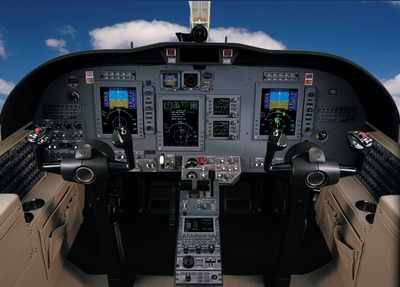
Single engine flight at cruise is not much of an event in a CJ,
particularly once you start a descent and you've pulled the other
engine back. My biggest problem right now was trying to communicate
with ATC while the aural warning was going on in the background.
The difficulty understanding ATC and being understood was creating
its own hazard. My safety equipment was making the flight unsafe.
Every new contact I made with ATC, no matter what I asked for, was
followed with the question, "Do you wish to declare an emergency?"
So why, you wonder, didn't I just pull the circuit breaker on the
warning system? Have you ever left home without your wallet?
On final into Jackson, I brought the right engine back up out of
idle to make the landing easier, slid the airplane on to the runway
nicely, rolled off onto the taxiway and called Jackson ground for
taxi clearance.
"Do you wish to declare an emergency?", they answered.
I think about this event, a non-emergency emergency caused by a
faulty switch, pretty often. I could have easily turned this
non-event into a real emergency had I not been conditioned by the
training I've received in a flight simulator.
It turned out that the reason I couldn't turn off the aural
warning was because the little oil pressure switch on the engine
was failing and then working and then failing and then working
again every one or two seconds. A little switch on a new airplane.
A little $885 switch, just like the $12 ones they have in cars,
attached to the idiot light on the dashboard. When was the last
time you had one fail in your car?

Lacking a solution for effectively testing our designs and
efficiently developing new ones we have committed to building an
R&D facility in the form of a working, for profit, flight
school at an airport in central Texas. The work product of that
institution will be available to and benefit everyone in the
industry and we, and our development partners, are looking forward
with great anticipation to its opening in the fall of 2011. As a
step toward fixing the problems with flight training, it's a drop
in the bucket, but it's a start.
But what about everyone else, the airplane manufacturers, the
avionics companies, the insurance companies, the regulators, and so
on? What are you guys going to do to help save flight training?
Here's an idea. How about establishing flight training as a
separate "class" of customer with its own special products,
pricing, and services. Yes, special pricing does mean reducing your
prices. This strategy is used all the time by all kinds of
industries to promote future business. Microsoft does it for
students and teachers, country clubs offer junior memberships, car
companies do it for graduates in the name of establishing a future
customer on a particular product track. Think of this as a
marketing cost, an investment for future returns.
A risky move? Maybe, but doing nothing is riskier.
Should you wait until the other guy does something first?
Ask our competitors how that idea worked out for them.
Note: Jerry Gregoire is the Founder and
Chairman of Redbird Flight Simulations and is a member of
the General Aviation Manufacturers Association (GAMA) Board of
Directors. He's also a heck of an interesting guy to talk to...
 ANN's Daily Aero-Linx (04.15.24)
ANN's Daily Aero-Linx (04.15.24) Classic Aero-TV: 'No Other Options' -- The Israeli Air Force's Danny Shapira
Classic Aero-TV: 'No Other Options' -- The Israeli Air Force's Danny Shapira Aero-News: Quote of the Day (04.15.24)
Aero-News: Quote of the Day (04.15.24) Airborne 04.16.24: RV Update, Affordable Flying Expo, Diamond Lil
Airborne 04.16.24: RV Update, Affordable Flying Expo, Diamond Lil ANN's Daily Aero-Term (04.16.24): Chart Supplement US
ANN's Daily Aero-Term (04.16.24): Chart Supplement US
















